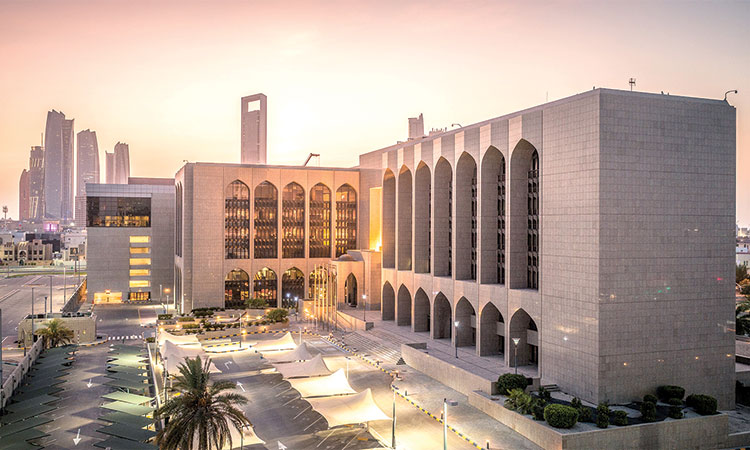CBUAE posts 10% growth in cash deposits to Dhs687.2b in October

The Central Bank’s cash aggregates statistics reveal a monthly increase of 0.19 per cent, or Dhs1.3b, compared to around Dhs685.9b in September 2023.
Breaking it down further, the Central Bank’s cash aggregates statistics reveal a monthly increase of 0.19 per cent, or Dhs1.3 billion, compared to around Dhs685.9 billion in September 2023.
During the first ten months of this year, cash deposits increased by 8.12 per cent compared to about Dhs635.6 billion at the end of last year, an increase of Dhs51.6 billion.
The quasi-cash deposits rose to Dhs1.123 trillion in October, up 24 per cent year-on-year from Dhs906.3 billion in October 2022, an increase of Dhs216.7 billion.
Quasi-cash deposits increased by 0.93 per cent on a monthly basis, equivalent to Dhs10.4 billion, compared to Dhs1.112 trillion in September 2023.
Quasi-cash deposits in the UAE rose by about 16.24 per cent during the first ten months of this year, compared to Dhs966.1 billion at the end of last year.
According to the Central Bank, quasi-cash deposits are term deposits and savings deposits in dirhams for residents in addition to deposits by residents in foreign currency. Cash deposits, on the other hand, are defined as all short-term deposits that a bank customer can withdraw without prior notice.
Central Bank statistics showed that government deposits rose to Dhs454.4 billion this October, growing by 4.34 per cent on an annual basis compared to Dhs435.5 billion in October 2022, an increase of Dhs 18.9 billion. On a monthly basis, government deposits increased by 2.53 per cent compared to Dhs443.2 billion in September.
The statistics pointed to an increase in the amount of currency in circulation to Dhs129.3 billion at the end of October, an increase of 11.75 per cent on an annual basis compared to Dhs115.7 billion in October 2022, and an increase of 1.65 per cent on a monthly basis compared to Dhs127.2 billion in September.
In a related context, Central Bank statistics showed that the monetary base rose by 29 per cent on an annual basis to reach Dhs596.9 billion in October, compared to Dhs462.7 billion in October 2022, an increase of Dhs134.2 billion.
The monetary base includes Dhs210.7 billion in monetary licences and Islamic deposit certificates, Dhs80.2 billion in current accounts of banks and other financial institutions at the Central Bank and overnight deposits of banks at the Central Bank, Dhs129.3 billion in currency in circulation, which includes currency outside banks in addition to currency in banks, and Dhs176.7 billion in reserve account.
Sustainable Islamic finance: The Central Bank of the UAE (CBUAE) has issued the UAE Islamic Finance Report 2023 which highlights the sustainable Islamic finance efforts of Islamic financial institutions (IFIs) across the UAE. The report comes in line with the UAE’s Year of Sustainability and its recent hosting of COP28.
The report analyses the performance of various Islamic finance sectors, initiatives and activities globally and locally, with a specific focus on sustainability. The report also provides an overview of the legislative, regulatory and Shari’ah governance landscape, in addition to an assessment of the sustainability strategies adopted by IFIs as well as the opportunities and challenges they face.
In the report’s opening message, Khaled Mohamed Balama, Governor of CBUAE, emphasised that the development of the Islamic finance sector is instrumental for the UAE’s sustainable growth and its achievement of sustainable development goals, in keeping with the vision of the country’s leadership.
He also noted that the Islamic banking sector has become an integral part of the UAE’s financial industry, accounting for 23 per cent of total banking assets within the UAE in 2022, equivalent to Dhs845 billion. Meanwhile, Islamic windows, in addition to the takaful market and sukuk issuances, account for 25 percent of total Islamic banking assets in the UAE, equivalent to Dhs214 billion.
Balama said, “Islamic banks play a crucial role in the development and provision of sustainable finance and in meeting the sustainability objectives of the wider financial sector, in accordance with the UAE’s regulatory, supervisory and risk management directives. This is further strengthened by the issuance of the Guiding Principles Regarding Sustainability in Islamic Financial Institutions by the Higher Shari’ah Authority.”
He added, “We will continue our efforts to support the development of the Islamic and sustainable finance sectors in the UAE to enhance their stature and participation within the wider industry.”
The report also presents key statistics and indicators regarding the UAE’s Islamic finance landscape. Chief amongst these are the presence of eight standalone Islamic banks, 16 Islamic banking windows of conventional banks, and nine Islamic finance companies operating in the UAE.
The report also highlights the presence of 10 takaful insurance companies with total gross written contributions amounting to Dhs4 billion in 2022, whereas the value of sukuk outstanding stood at Dhs217 billion in H1 2023.
WAM







